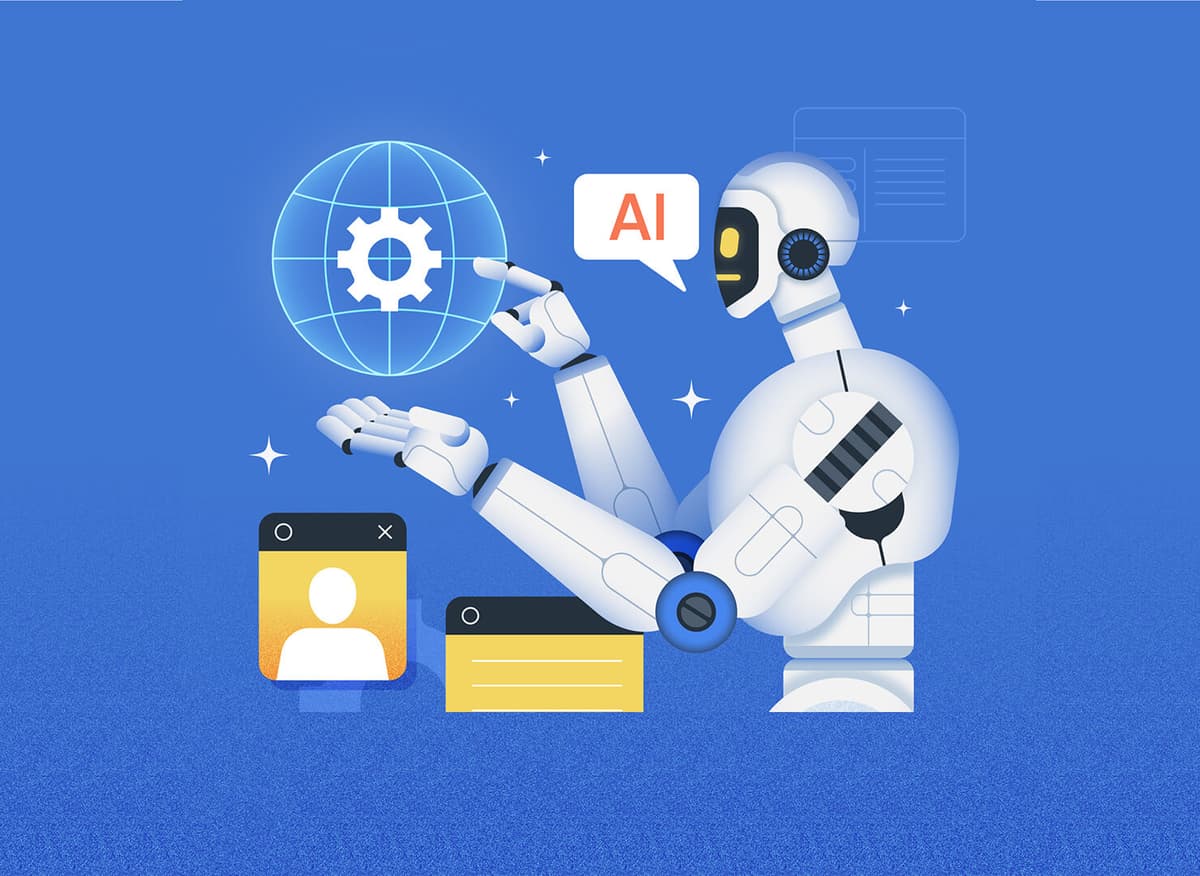


Sep 22, 2025
-
By Clive

![]() AI Summary By Kroolo
AI Summary By Kroolo
Picture those endless chains of email approvals, clunky spreadsheets, and a mysterious “manual sync” ritual every Monday.
Now imagine delegating all that to tireless digital brains—AI agents that never take a coffee break. In 2025, smart automation isn’t just a rumor; it’s revolutionizing how businesses reimagine productivity.
From agentic assistants to no-code bots, workflow automation powered by artificial intelligence means more strategy, less slog, and potentially fewer “Did you see my email?” mysteries.
Let’s unpack how market leaders deploy AI to transform operations, slash costs, and supercharge outcomes.
The automation in any business workflow works in the below given manner:
Data is pulled from various sources such as customer records, reports, or scanned documents using APIs and Optical Character Recognition (OCR). This information is then cleaned and structured for further processing.
Processed data enters the learning phase, where machine learning models identify patterns and trends. Natural Language Processing (NLP) enables AI to understand and act on human language inputs from chats, emails, and customer feedback.
AI models are trained using curated datasets. Machine learning techniques assess accuracy and reliability before real-world deployment, ensuring that models are robust and ready for operational use.
Fully trained models are integrated with live systems to automate tasks such as scheduling, pricing, or handling customer service queries. Intelligent process automation and business process automation tools ensure workflows run smoothly with minimal human intervention.
Models are monitored for ongoing accuracy and are refined with fresh data using continuous learning and generative AI. This ensures workflows stay error-free and generate new insights or content to stay ahead of evolving business needs
AI workflow automation lets businesses orchestrate smarter, self-improving processes. It's adaptable, intuitive, and rapidly becoming the strategic backbone across finance, HR, IT, sales, and customer service in 2025.
AI automates repetitive, manual tasks, freeing human talent for innovation, strategic planning, and high-value work. This results in faster cycle times and reduced operational friction.
AI workflows leverage real-time data processing and predictive analytics to surface insights and improve decision-making, minimizing errors and boosting business agility.
Automated workflows adapt to changing business needs and volume, scaling effortlessly across sales, finance, HR, and customer service without the need for more headcount.
AI-powered chatbots and service agents enable 24/7 personalized support, resolve issues rapidly, and continually improve from customer interactions, enhancing satisfaction and loyalty.
With fewer manual interventions and accelerated processing, companies achieve significant reductions in operational costs and optimize resource allocation for growth.
Agentic AI and hyperautomation enable new business models, continuous process improvement, and competitive differentiation, positioning forward-looking firms as industry leaders in 2025.
Explore the components that shape automated AI workflows. Each element plays a critical role in connecting tasks, enabling smart decision-making, and delivering seamless process optimization for modern, fast-paced organizations in 2025.
A workflow engine coordinates, sequences, and executes all tasks, ensuring logic, dependencies, and business rules are followed efficiently. This is the heart of process automation, directing actions from start to finish for consistent results.
AI models bring intelligence to automation by learning from historical data, making accurate predictions, detecting anomalies, and optimizing decisions in real time. These models continuously improve process performance across multiple business functions.
The data integration layer connects various business sources—ERP, CRM, email, and external databases—streamlining information flow and enabling seamless handoff between automated systems for real-time, end-to-end process efficiency.
A modern AI-driven workflow offers intuitive dashboards, chatbot interfaces, notifications, or mobile apps for human interaction, letting team members review, approve, and engage with automated tasks easily when intervention is needed.
Automated workflows employ real-time monitoring, error detection, and self-improvement mechanisms. Performance analytics and feedback loops ensure the system remains robust, agile, and aligned with evolving business goals in 2025.
AI workflow automation starts with event-based triggers (like form fills, customer queries, CRM changes) and interfaces with APIs or external tools, reliably activating actions and orchestrating complex, multi-step processes across platforms.
See the dramatic shift with this comparison table: From tedious manual operations to AI-driven efficiency, here’s how core business tasks and outcomes transform when automation takes charge.
|
|
|
|
|
|
|
|
|
|
|
|
|
|
|
|
|
|
|
|
|
|
|
|
|
|
|
|
|
|
|
|
|
Kroolo empowers businesses by deploying AI agents that automate task assignments, project management, data handling, and search, driving speed, accuracy, and strategic visibility throughout enterprise workflows in 2025.
Kroolo introduces ready-to-use and customizable AI agents, letting teams automate not only standard processes but complex, cross-functional operations with zero manual intervention and continuous self-optimization.
AI handles routine project planning, status updates, and risk tracking, so teams can focus on strategic decisions and innovation rather than daily administrative overhead.
Kroolo’s AI search scours all connected docs, emails, and platforms, delivering precise answers and instant summaries, eliminating information silos and search fatigue.
Kroolo’s automation tools connect every system—CRM, ERP, HRIS—making real-time data accessible and actionable for smarter, faster business decisions.
Automated agents manage support tickets, FAQs, and personalized responses, reducing response times and improving the customer experience across channels.
Powerful no-code builder lets business owners design and deploy workflow automation without any IT dependency—accelerating transformation and adaptability for CXOs and managers.
Tags
Productivity
AI